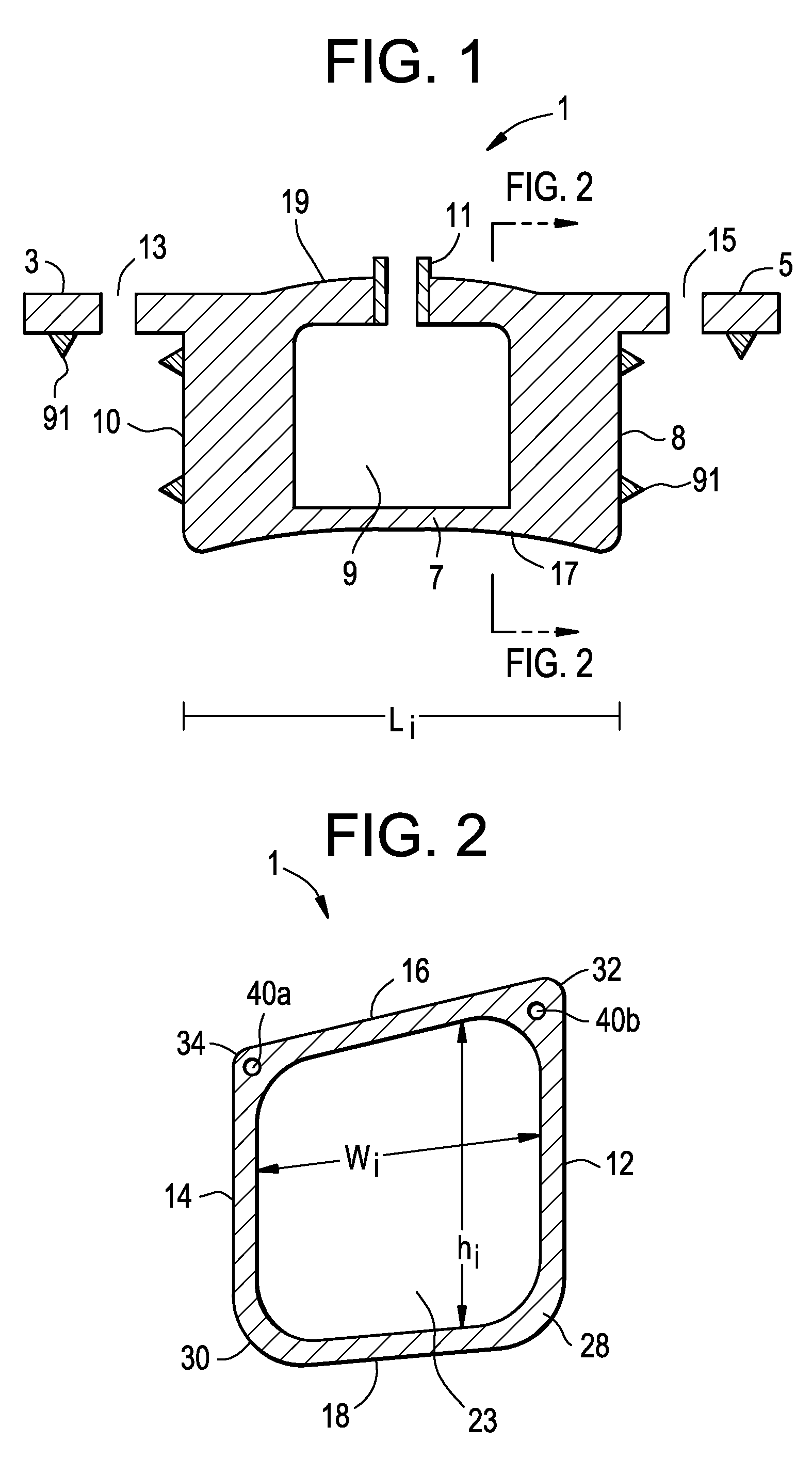Methods and Devices for Expanding A Spinal Canal Using Balloons
a technology of spinal canal and balloon, which is applied in the field of methods and devices for expanding a spinal canal using balloons, can solve the problems of increased medical costs, pain, and weakness in arms and/or legs, and achieve the effects of avoiding the permanence of metallic implants, and reducing the risk of infection
- Summary
- Abstract
- Description
- Claims
- Application Information
AI Technical Summary
Benefits of technology
Problems solved by technology
Method used
Image
Examples
Embodiment Construction
[0034]Now referring to FIG. 1, there is provided an expandable laminoplasty implant 1 for insertion into a prepared lamina having having opposing end portions and opposing faces defining a lamina space, the implant comprising:[0035]i) a first end portion 3 adapted for securement to a first end portion of a prepared lamina,[0036]ii) a second end portion 5 adapted for securement to a second end portion of a prepared lamina,[0037]iii) an intermediate portion 7 between the first and second end portions, the intermediate portion having an enclosed cavity 9, and[0038]iv) an inlet port 11 in fluid connection with the enclosed cavity.
Also in FIG. 1, the first end portion comprises a first throughhole 13 adapted for reception of a first bone fastener (not shown), while the second end portion comprises a second throughhole 15 adapted for reception of a second bone fastener (not shown). Further, the intermediate portion further comprises a concave side 17 and an opposed convex side 19. The cur...
PUM
 Login to View More
Login to View More Abstract
Description
Claims
Application Information
 Login to View More
Login to View More - R&D
- Intellectual Property
- Life Sciences
- Materials
- Tech Scout
- Unparalleled Data Quality
- Higher Quality Content
- 60% Fewer Hallucinations
Browse by: Latest US Patents, China's latest patents, Technical Efficacy Thesaurus, Application Domain, Technology Topic, Popular Technical Reports.
© 2025 PatSnap. All rights reserved.Legal|Privacy policy|Modern Slavery Act Transparency Statement|Sitemap|About US| Contact US: help@patsnap.com



